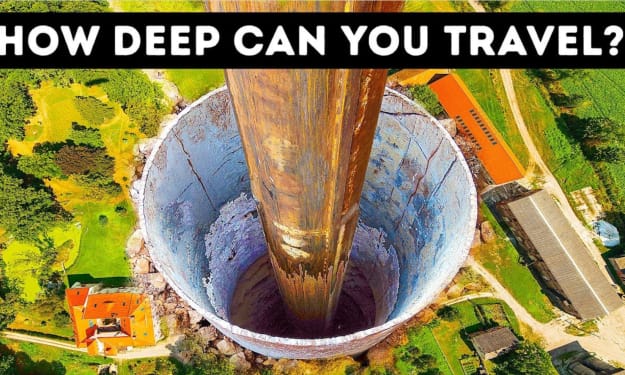A Device That Could Reforest Earth
Engineering Attempting To Solve Nature Challenges

This is a tiny, self-propelling wooden robot made of a single material that has the potential to completely change the face of the planet. If you place it on the ground, it will begin to bury itself slowly, attach a seed, and you could use it to replant forests all over the world. It's an amazing design that could also have a significant impact on energy harvesting, soft robotics, and sustainable building practices. But what exactly is it? Hygromorphs—structures that alter shape in response to humidity, such as pine cones whose scales automatically close when they get wet—were the original source of inspiration for its development.
While plants frequently use structures like these to adapt to their surroundings, one particularly similar plant that is already found in nature is the rhodium plant. This plant produces fruit and seeds with a hydromorphic tail-like structure that helps propel it into the ground to germinate as the moisture in the environment changes. However, while this plant served as a major source of inspiration for this research, there was one very important issue: the success rate of erodium seeds for drilling into the ground is actually very low.
The research team decided to improve upon Nature's design by creating a more efficient hydromorphic structure based on our calculation and simulation results. Having three anchor points prevents it from flipping over or falling down so that it always faces downwards at a very specific angle, which helps with the success rate. On some terrains, it even has a zero percent success rate. a lot—five votes, in fact—in our experimental results, so the number of coils is kind of simulated with mechanical simulation. This means that there is a trade-off—having more coils will soften the structure as a whole, but fewer coils won't provide enough thrust force and actuation effect.
The seat can be securely positioned underground thanks to drilling, where there is less possibility that it will be eaten by an animal damaged by fire, extreme weather, or erosion. The goal of this entire endeavor was to create wood that could bend significantly while yet being strong and rigid. It was a tremendous feat of science and engineering. There was a lot of math and precision involved in designing this to run for the ideal number of coils, angle of entry, and curvature of the wood. When the design comes into contact with moisture, the wood expands, but the inner layer cells do so more quickly than the outer layer, which causes the robot to coil. Later on, as it dries, the cells contract at varying rates, with the inner layer cells shrinking more quickly and forcing the seed deeper into the soil.
We selected oak wood because it is among the strongest and most readily available woods. We then undergo a series of chemical treatments that are nearly identical to those used to make paper. We have conducted experiments in this process to ensure that the wood is pliable at this point but not as easily broken as a prolonged processing would cause. Finally, we introduce mechanical molding to create this nutrient structure, which is the first of its kind to be made entirely of wood without the need for synthetic materials. The advantage of using only wood is that it is fully biodegradable, so you won't be left with a pile of waste lying on the forest floor for eternity.
In addition to all of this, it can carry seeds up to 75 milligrams in weight, which is significantly heavier than the 8 to 20 milligrams that natural hydromorphic seed tails typically carry. This opens the door to a variety of reforestation methods, and the team can customize them to fit various terrains due to the design's adaptability. Additionally, they experimented with dropping seeds from drones in the air, and they were successful 90% of the time at the ideal angle. Furthermore, by adding nematodes and helpful fungi to the robot, the research team was able to improve plant health and survival rates in their natural habitats.
Though there has been a lot of interest in soft robots—we even made a video covering some new liquid robots—wood robots sort of blend both soft and hard robots into a new firm category. Firm robots have the advantage of being able to interact with their environment, like soil, more easily while also possessing some of the amazing shape-shifting qualities of soft robots. However, the long-term implications of this go far beyond simply planting more trees.
It's the conversion of one source of energy—water absorption from the outer case into a drilling motion—into another. There is material that responds to heat and changes into different emotions. Maybe linear, maybe circular This arbitrary instance This kind of actuator can be used to cover a window, and when it rains, it can activate certain scales that open and close in response to the outside humidity. The designs are passive, so once they are created, we are just dependent on the elements.
Thank you so much for watching. I really hope you found it as intriguing as I do. If so, please make sure to like the video and subscribe for more science in the upcoming weeks. I'll see you soon, peace. This is an incredible example of bio-inspired engineering attempting to solve challenges with a Little Help from Nature.






Comments
There are no comments for this story
Be the first to respond and start the conversation.